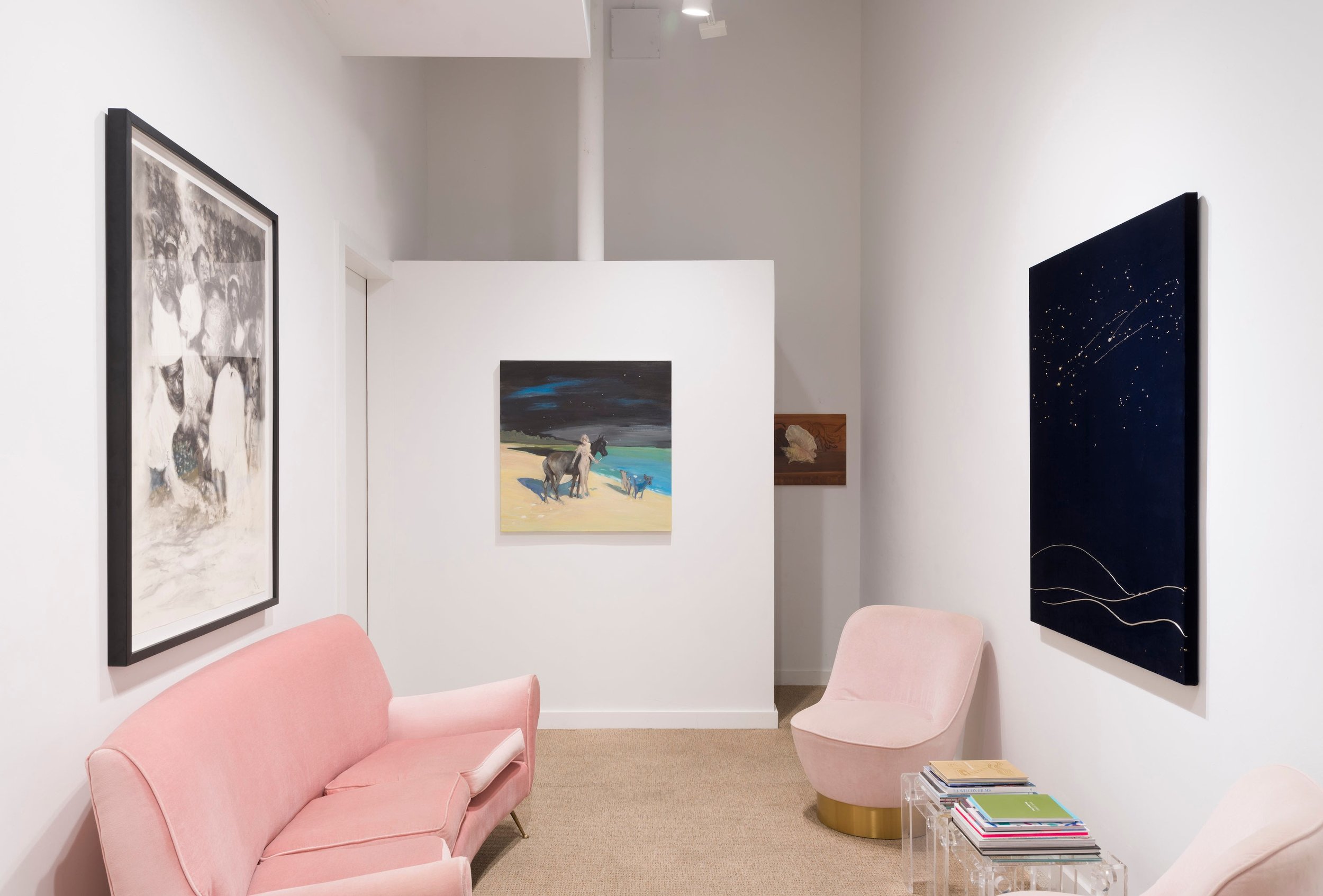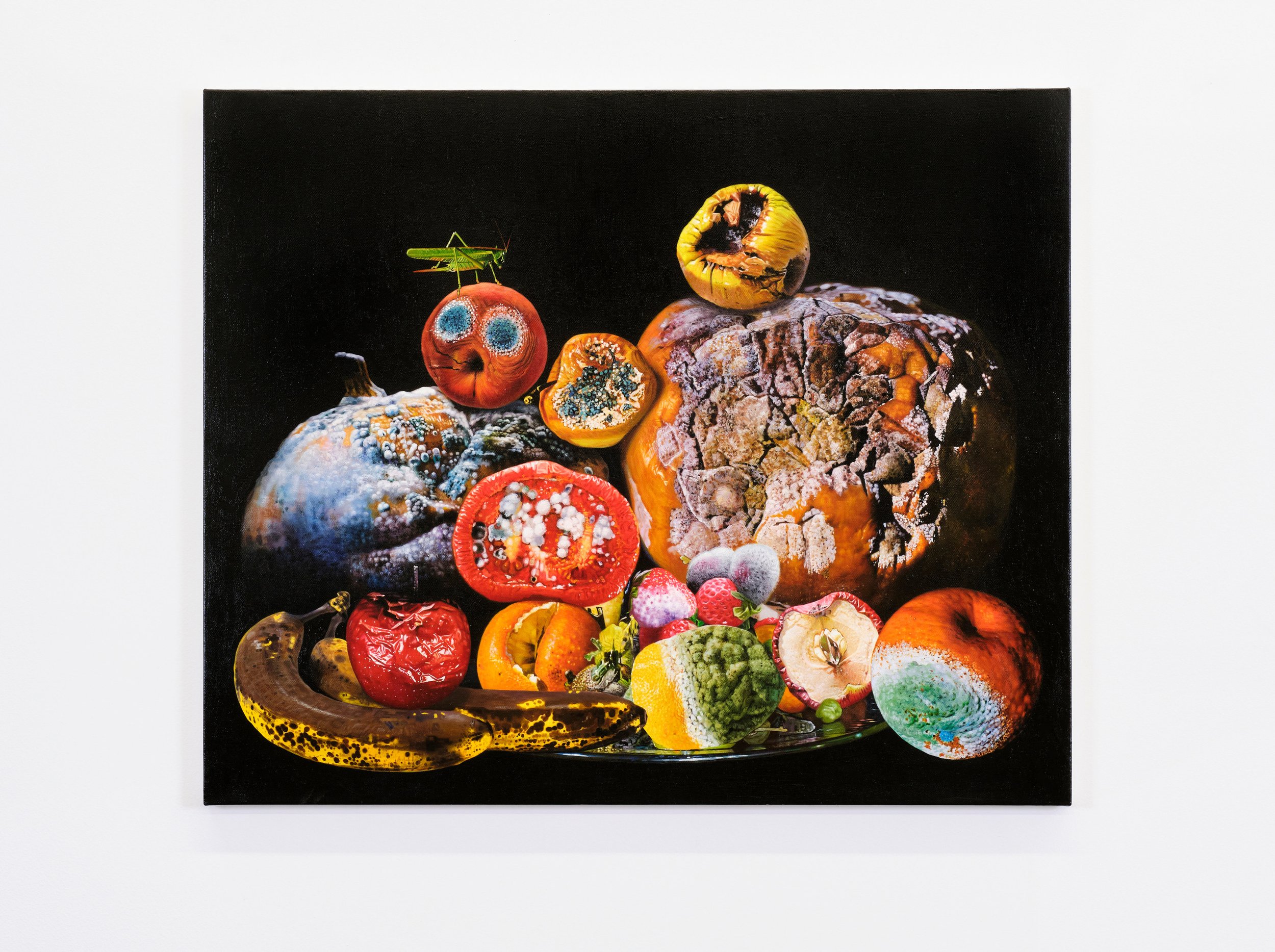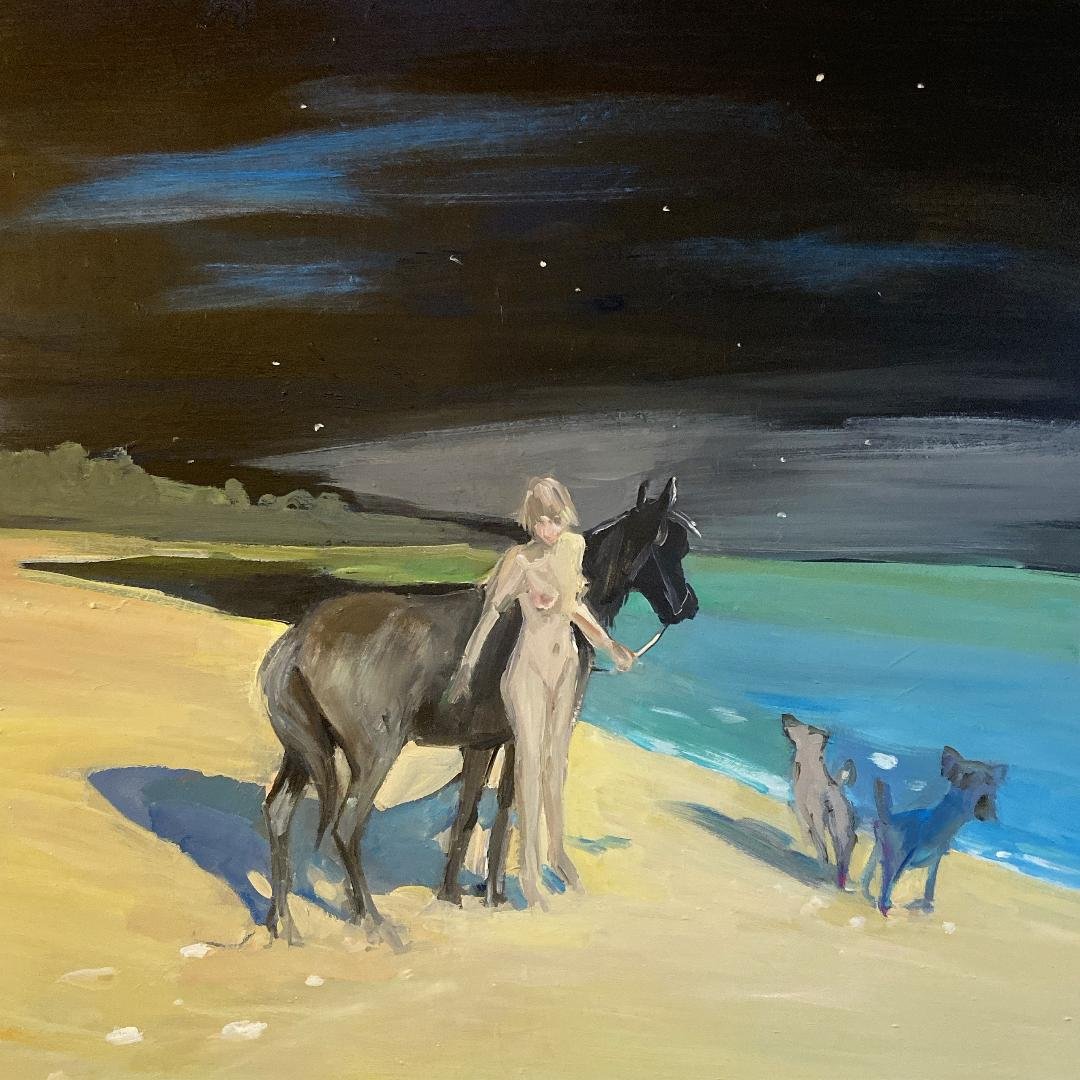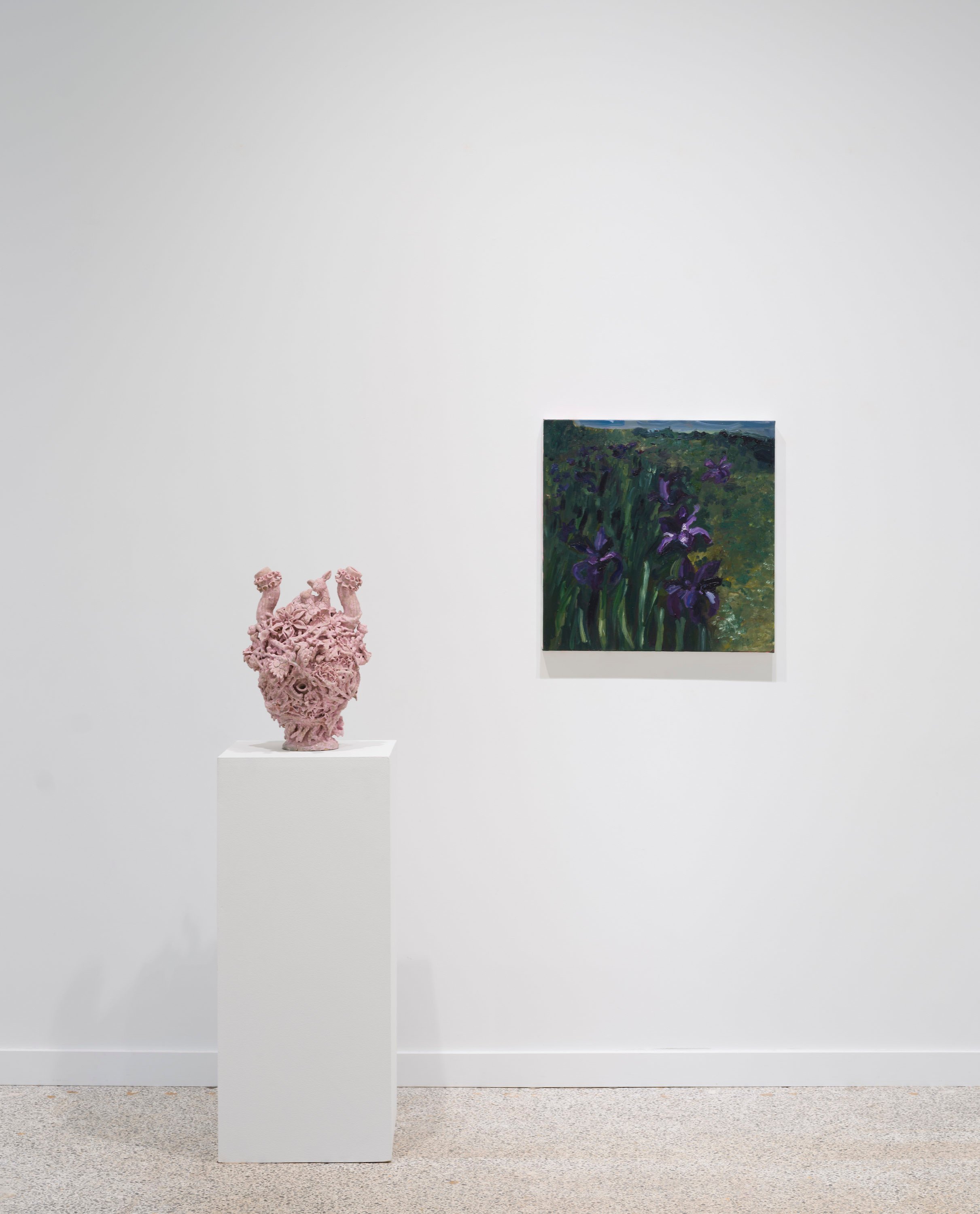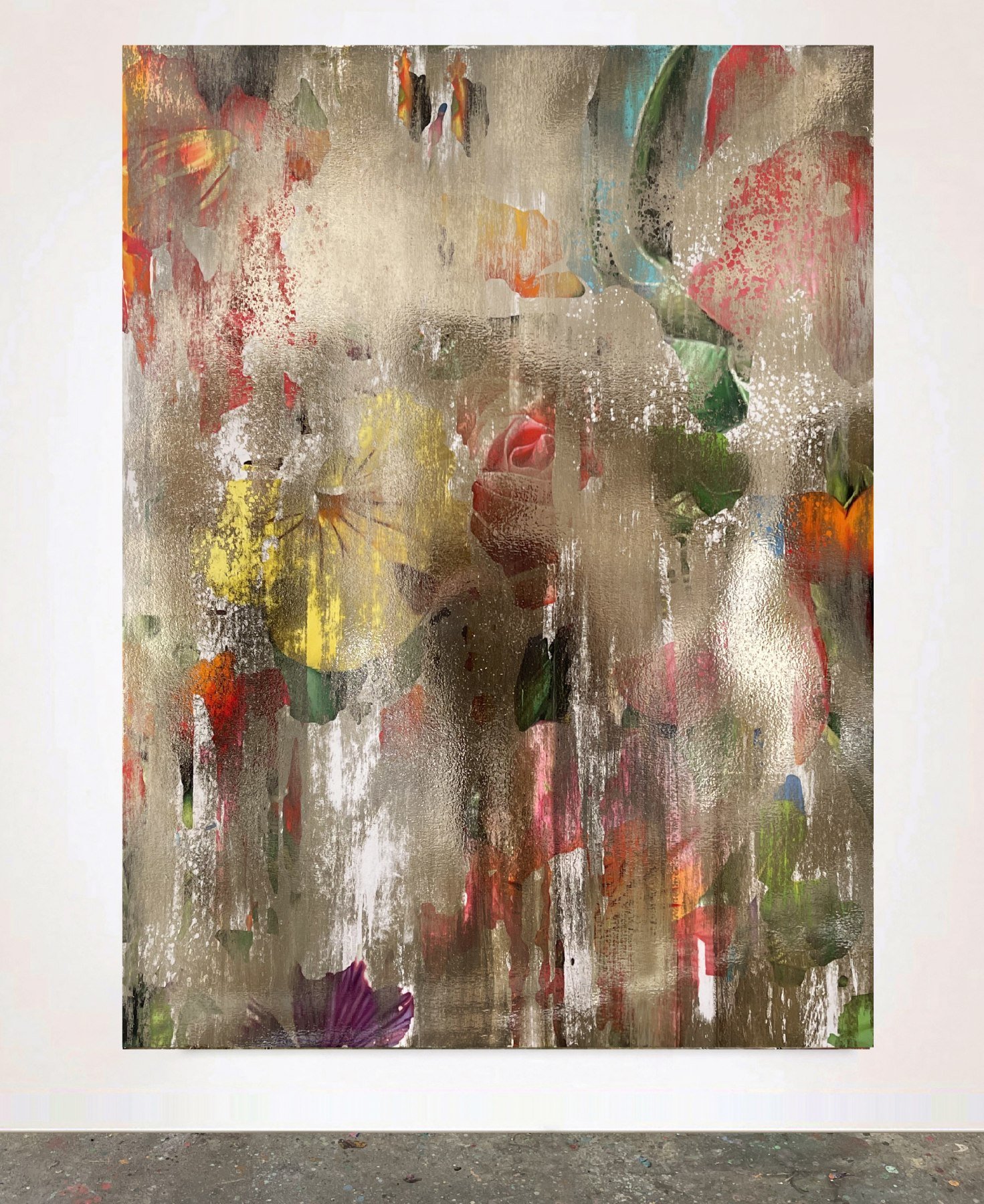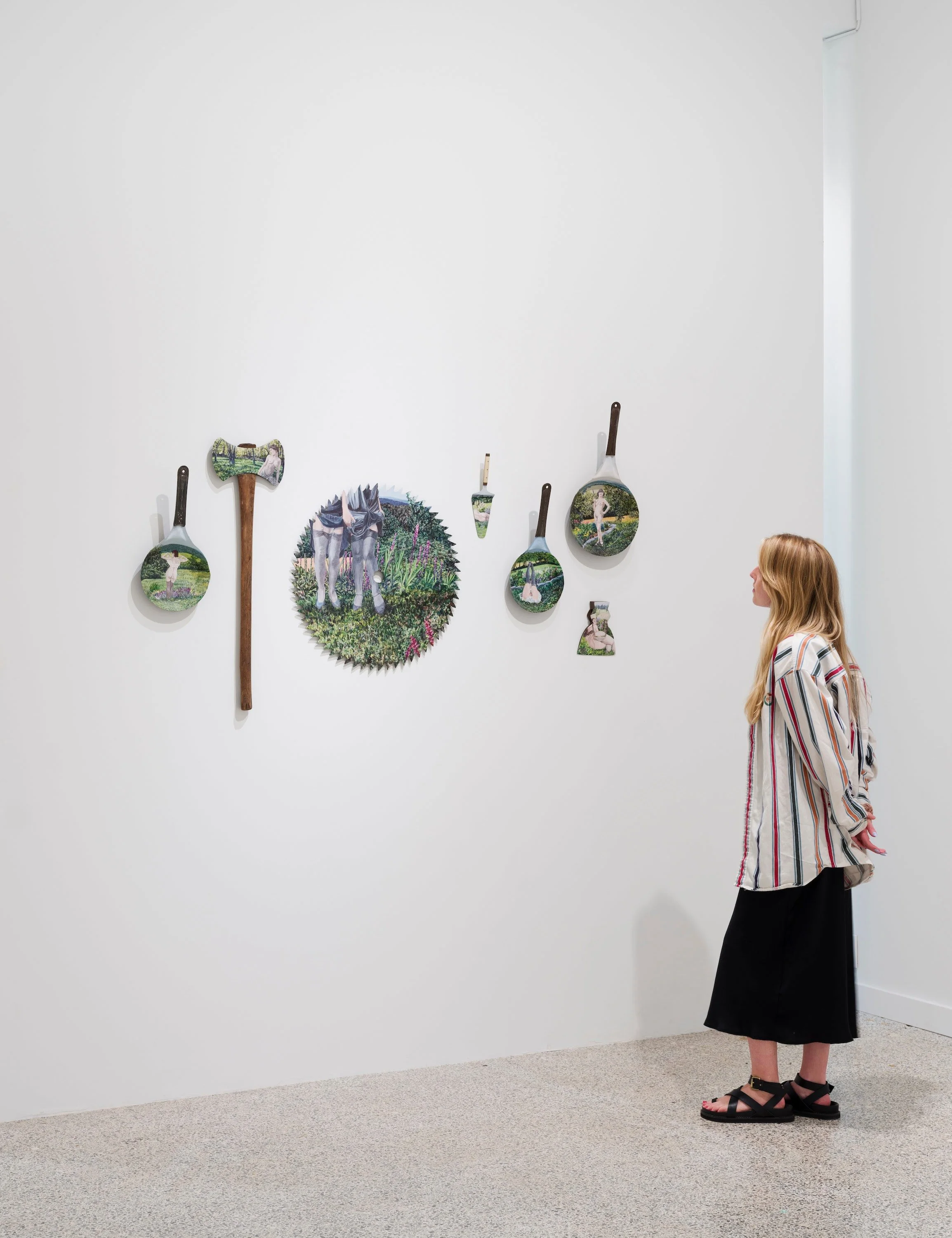Irina Rothenberg in conversation with curators Eloise Janssen and Bethani Wells
A curator is the person who has a vision, conceptualises a show, and gives it a mission to accomplish and a story to tell. I have long been fascinated with the idea of curating an art exhibition and generally hold visionaries who do it in high esteem. So, when I had a chance to pick the brains of my two coworkers who staged their first commercial gallery show, I jumped on the opportunity.
GAVLAK Palm Beach is an internationally recognised contemporary art gallery founded by Sarah Gavlak in 2005. Having since opened its sister space in Los Angeles and an office in New York, Sarah Gavlak is among the leading-edge, progressive dealers who, from the beginning, has maintained a focus on women and LGBTQ artists. Bethani Wells is a registrar with the gallery, while Eloise Janssen oversees all communications and marketing efforts. Both having graduated with degrees in visual arts, they expressed interest in curating a group show for the off-season summer months when solo exhibits take pause. What started as a humble endeavour turned out to be a gratifying accomplishment.
Tupelo Honey, is on show at GAVLAK Palm Beach, Florida, through October 5, 2023. It is named after honey from Florida and Southern Georgia that is made from the Ogeechee tupelo gum tree blossoms that line waterways. Tupelo Honey embodies enduring, golden afternoons and serene evenings in the tropical summers of Florida. Long summer days and coastal summer nights leave an indelibly sweet taste in our memories, where time stretches lazily, and nature’s embrace is exquisite. This exhibit received attention from both local and national press, from print and digital outlets alike. It was mentioned on several must-see-exhibits lists, but most importantly, because it left no visitor indifferent, the show was (and still is) a great success.
In this exclusive interview with MADE IN BED, Eloise Jassen and Bethani Wells share their approach and methodology to curating Tupelo Honey.
Bethani Wells (Left) & Eloise Janssen (Right).
Irina Rothenberg: How did you come upon the concept for the show?
Eloise Janssen: We started brainstorming and fell into the idea of night and day. This became the show's concept, centring around summer days and nights in South Florida. There is a nostalgic beauty around summer in the South, and this show is our homage to the memories and beauty here.
Bethani Wells: Yes, our aim was to showcase the rare beauty of Florida’s summers that only seasoned locals experience and for our audience to connect with the work in a way that brings out the sweet taste of summer in their own memories.
Betty Tompkins’ scenic painted tools served as the initial inspiration for the exhibition. Part of Betty Tompkins’ Soft Core series from 2000, they depict female nudes posing in flower beds and lush grasses, sensually calling in summer. These soft, succulent images are painted on hard-core exteriors like circular saws, axe heads and frying pans. They embody the dichotomy of strength and softness found in nature’s femininity.
Installation view. Tupelo Honey, 2023. Courtesy: GAVLAK Palm Beach.
IR: I was fortunate to be around during your creative process. It gave me a sense that you toggled your responsibilities and intentions smoothly, almost naturally. How would you define your individual strengths?
BW: Ellie and I truly complement each other in our strengths, and both bring a thoughtfulness and level of detail to our work that makes this off-season exhibition stand out. I could not think of a better person to co-curate this show with. I am grateful to get to learn from and work alongside her day-to-day.
EJ: Bethani feels like the rock, stable and grounding. She thinks logistically about the show's setup and procedures. Her operational knowledge of exhibitions is impressive and vital to the creation and execution of the show. She is steadfast in the ideas she holds close to but allows space for other ideas and change. I bounce around often, sticking to one idea only briefly. The space is a multitude of possibilities, most not reasonable. We work well together because of this.
BW: Also, Ellie is a talented writer and put together a beautiful press release for the show. As Ellie handles more of the intellectual and design aspects for the show (and overall at the gallery), my strengths are based on the physical execution. I have the joy of supporting artists through executing their visions, essentially making the magic come to life.
Marc Dennis, Sanctuary, 2022. Oil on linen, 86.4 x 104.1 cm. Courtesy: GAVLAK Palm Beach.
IR: Working for a for-profit gallery, to what degree were you considering a commercial aspect of the undertaking?
EJ: Summer is a quiet and challenging time for walk-in sales, so that was always at the front of our minds, but we wanted those works to be pushed by our vision for the show. The commercial value didn't dictate what we showed but did help guide the framework of who and what works we wanted. You need a good exhibition to bring people in. That was our main focus.
BW: The success of the gallery and commercial aspect was naturally at the forefront of our minds when planning the exhibition. Every summer, the gallery does a group show of “greatest hits” or top-selling works by GAVLAK’s represented artists. We still did that but elevated it with a more thoughtfully curated theme and layout.
IR: Did you conceptually break the show into visual clusters or stories? How might the layout of the gallery space have dictated the placement of the works?
EJ: Following the gallery's layout, we focused on bright works encapsulating the daytime in the gallery, mirroring how open and light the space is. The back gallery is more intimate and where we have our night works; it holds those dark, quiet moments we don't want to forget.
BW: There are curatorial moments both visually and conceptually throughout the show [which] we chose with intention in addition to the greater narrative.
For example, I consider the grouping of Andrew Brischler's Blue Eye (for Herb), Song of Freedom (Daniela García, The Light Within You) by Jose Alvarez (D.O.P.A.) and OCULUS by Rob Wynne to be three spiritual eyes that invite the viewer to gaze inward. They each have a surrounding radiance, like the beaming feathers in Alvarez's work and echoing water-like rings in Brischler's within their compositions that pull the viewer into their core. OCULUS has a portal-like mirror at the centre that directly calls the viewer to reflect on who they are. When one embarks on the invitation to look inward, they gain an understanding of themselves through finding the divine kingdom of God within. From this relationship with God abounds a sweetness, rare and golden, metaphorically like Tupelo Honey.
Installation view featuring Andrew Brischler, Blue Eye (for Herb), Jose Alvarez (D.O.P.A.), Song of Freedom (Daniela García, The Light Within You) and Rob Wynne, OCULUS. Courtesy: GAVLAK Palm Beach.
IR: I can see how you made meaningful connections with the pieces as you chose them or maybe even before curating this exhibit. With every work playing an important part, are there pieces without which the show would not come together?
EJ: The Betty Tompkins softcore series. When Bethani and I started working together, we discussed what works we liked from the gallery collection, and we both landed on this series. We were drawn to its uniqueness and how rooted it is in the materiality of it.
BW: Ellie and I have always shared an admiration for these works, which have been hidden in GAVLAK’s warehouse unseen for years. When presented with the opportunity to curate the summer exhibition, we thought they would be a beautiful flower-heart to shape the exhibition around, and we were excited to bring them out. From there, we selected other gallery inventory we felt reflected a dreamy feeling of summer days in South Florida, where we both grew up.
EJ: All of the works are key in the show. The conversations created between pieces make a choir, elevating the feeling of summer.
BW: At this point, it’s hard to imagine the exhibition coming together in a different way. Although I don’t think there is any one piece that would have hindered the exhibition from coming together and our vision being realised, I think we selected each work with great thought and care. We were grateful to have most of our choices approved by the artists and directors at GAVLAK.
I think we are exceptionally proud to have brought on work by Lake Worth [FL] based artist Manuela Gonzalez, whom Ellie and I got to do a studio visit with and introduce to GAVLAK’s program in a bigger way.
Andrew Brischler, Blue Eye (For Herb), 2021. Colored pencil, gouache, and graphite on watercolor paper, 132.1 x 182.9 cm (Unframed). Courtesy: GAVLAK Palm Beach.
IR: Eloise, you mentioned a choir of the conversations between pieces. This is a perfect metaphor. Can you elaborate on the dialogue among different pieces?
EJ: The front gallery flows from gold to blue to pastels expressed in ceramics, bronze, and found fabrics. Texture is a vibrant quality often overlooked, and I wanted to have a range of works with different materials. Nancy Lorenz's work is made of this deep, soft black velvet that absorbs the light, while Marc Dennis has a spotless black background for his still life of rotten fruit. They read entirely differently. Colour is a great first visual sense of a work, but the tone is in the texture.
BW: One of the moments that comes to mind is the interplay between Taha Heydari’s Caspian Beach and Untitled by Manuela Gonzalez. Both commemorating textiles' ability to manifest nostalgic memories and ideologies of our present, they visually share a right triangle in the top right corner of their compositions, revealing a blue sky representing comfort and hope for the future.
In the back gallery, Deborah Brown’s Dark Horse and Midnight Velvet by Nancy Lorenz, which Ellie mentioned, tell a romanticised story of adventure and freedom. Beneath a sky of stars, a nude woman, her horse, and two dogs find themselves at the shoreline on a warm coastal night in Deborah Brown’s Dark Horse. I imagine them reflecting on the day’s journey and where to settle for the evening, safe and free by the ocean. Looking out at the night, the ocean grows darker, with only the golden glimmer of the moon reflecting on the waves, and the sky grows brighter with shooting stars dancing above. Next to it – a poetic, rich depiction of a night’s sky, perfectly titled Midnight Velvet by Nancy Lorenz, that Eloise mentioned.
Deborah Brown, Dark Horse. Courtesy: GAVLAK Palm Beach.
Installation view featuring Anthony Sonnenberg, Peace Pot (Double Prong Bong), 2019 and Lindsay Adams
Irises in Hudson, 2022. Courtesy: GAVLAK Palm Beach.
IR: With the ephemeral notion of FL summer, what feeling were you hoping viewers would carry out of the show? What was some of your best (or most interesting) feedback?
EJ: It was nice to hear that people even liked the show! The work is non-representational and meant to evoke the feeling of summer; sometimes, it doesn't land. But there are so many people who were responsive to the work and the show as a whole. If the idea came across clearly or even foggy, I am happy.
BW: We hope each viewer finds their own sweet memory of summer to reflect on somewhere in the show. If they were to leave with a feeling of inner peace and warmth as if from a restful feeling of the warm sun on their back or a refreshing breath of salty, coastal air, that would be the highest compliment. Feedback and compliments from the artists have meant the most to me. Jose Alvarez (D.O.P.A.) was so kind as to say how thoughtful, kind and reflective Tupelo Honey was, even stating it to be one of the strongest exhibitions he has seen put on at GAVLAK.
IR: You were fortunate to have works by artists whom your gallery represents available to you to choose from. What did your interaction with artists look like? Were you able to convey your vision points and get them on board?
EJ: It was great to see them excited and even promote the show. Initially, we reached out to see if it would be okay to use their work to gather a good base of pieces to choose from. Then, we sent them the press release and the installation images, and they were thrilled. They thought the show was a fresh reading of the works at the gallery, which to me means we succeeded.
BW: We corresponded with the artists mostly over email or in conversation. They were all very supportive and excited. We are grateful for their support and the opportunity to work with such a high calibre of artists.
Nir Hod, A Hundred Years Is Not Enough, 2022. Oil paint under chromed canvas, 203.2 x 152.4 cm. Courtesy: GAVLAK Palm Beach.
IR: Logistically, what would you say one must consider when planning a show?
EJ: Flexibility. Your first idea will never be your final plan. The show’s idea evolved and morphed. The work shifted and migrated. Sticking to your gut about specific placements and pieces is needed, but the ability to change and shift to see what works or what can be said in the showing makes a good curator.
BW: Of course, you want to consider any works that would need to be shipped for the exhibition, how much time that will take and the cost. For Tupelo Honey, we strived to use already consigned inventory, so we only had a couple of local shipments, which were very manageable. Additionally, it is important to think through what kind of team you will need to install and any special hardware needed based on the specific works included in the show.
IR: How close was the final result to your official vision?
EJ: We had thrown around some ideas initially, and nothing stuck until we landed on night and day. That piqued our interest, and we began to pick and prod at it until it formed into South Florida summers, both day and night. It fell into place and felt right, so we ran with it. The show as it is was a labour of love, and I couldn't have asked for anything more. The show is the essence of the summers I know and love. I hope others feel the same when they experience the show.
BW: The final result was pretty close to our original vision. We were very happy with the outcome and how smoothly everything went.
IR: And finally, the opening! How did you make it different? What factored into your decision to settle on a specific day?
EJ: It was the gallery's last big event [of the season], and we wanted to have a fun event for people to enjoy and come together.
BW: The opening day was also planned on the same day as those held at the PACE and Acquavella Galleries in our plaza. We wanted to work together for an off-season exhibition to pull a respectable audience. As mentioned, Ellie and I bring thoughtfulness and a level of detail to our work that makes this exhibition stand out. From creating text invites to serving homemade Tupelo Honey-inspired cocktails and snacks with Tupelo Honey from Savannah Bee Company (a homage to my SCAD days), we pursued excellence in every detail of the presentation and brought a special personal touch to this exhibition specifically.
EJ: Yes. Our honey-themed snacks and a signature cocktail tied everything together. It brought liveliness and excitement to the opening.
Installation view. Tupelo Honey, 2023. Courtesy: GAVLAK Palm Beach.
Many thanks to Eloise and Bethani on behalf of MADE IN BED. To learn more about GAVLAK Palm Beach Gallery please visit their website or Instagram. Additionally, to keep up with Eloise and Bethani you can also follow their Instagrams, @eloiseatthestudio and @bethaniwells_art.
Irina Rothenberg
Contributing Writer, MADE IN BED



